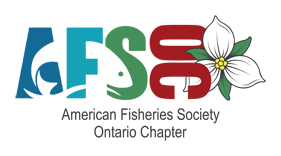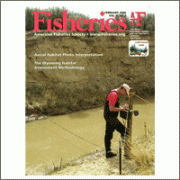Quantifying Submerged Aquatic Vegetation Using Aerial Photograph Interpretation: Applications in Studies Assessing Fish Habitat in Freshwater Ecosystems
AUTHOR(S): Dean G. Fitzgerald, Bin Zhu, Susan B. Hoskins, David E. Haddad, Kayla N. Green, Lars G. Rudstam, Edward L. Mills
CITATION:
Fitzgerald, D.G., B. Zhu, S.B. Hoskins, D.E. Haddad, K.N. Green, L.G. Rudstam and E.L. Mills. 2006. Quantifying submerged aquatic vegetation using aerial photograph interpretation: Application in studies assessing fish habitat in freshwater ecosystems. Fisheries 31(2):61-73. http://dx.doi.org/10.1577/1548-8446(2006)31[61:FHQSAV]2.0.CO;2
ABSTRACT:
Use of aerial photograph interpretation (API) in resource inventory projects recently has increased, and this reflects benefits like established protocols, high spatial resolution, readily available photography, and limited cost.
Application of API to quantify features of aquatic habitats used by fishes, like submerged aquatic vegetation (SAV), has been advocated for decades but a paucity of use suggests inadequate awareness of the methods. This article reviews a protocol that guides the use of API to quantify features of aquatic habitats, and then uses examples from contrasting habitats in the Lake Ontario watershed from 1972–2003 to illustrate this protocol. Even though we used photographs originally collected for other purposes, API identified the change in minimum area and depth distribution of SAV over time. These observations reinforce how API can contribute information to resource inventories, and why investigators should expand use of API in studies of aquatic ecosystems.
FULL TEXT – Fitzgerald et al.



